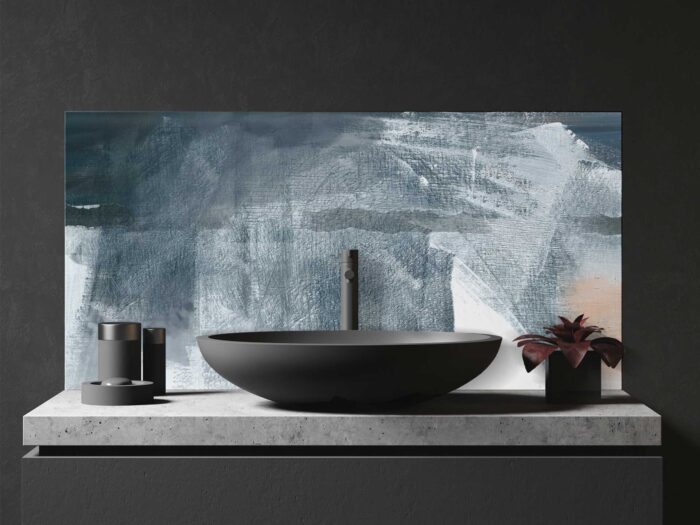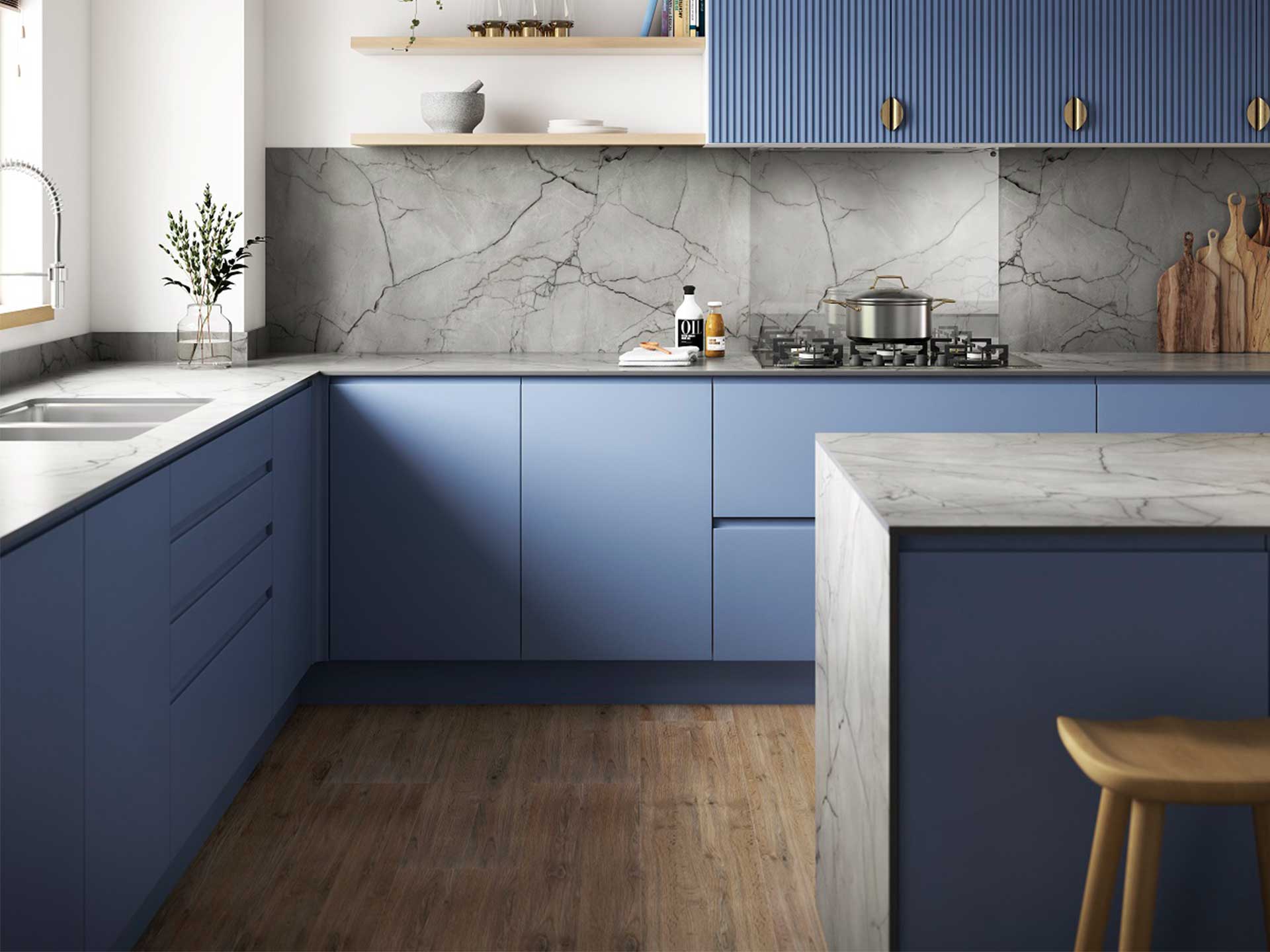
Image credit: Wilsonart
Upstand vs splashback
The humble upstand or splashback (sometimes known as a backsplash) is an integral part of the kitchen, but one that’s very often overlooked in design. They’re frequently put in as function over style, and not given a second thought to. But in fact, they can bring a real statement and focal point to your kitchen and bathroom.
Firstly, we’ll dig into what an upstand and splashback is, and which (or both) would be best for your kitchen or bathroom. Then we’ll explore what’s new in the world of upstand and splashback materials with inspiration running the gamut from chic wood-look porcelain to brass to fantastic bespoke glass artworks from Sally Coulsdon from Red Dog Design. Which is your favourite?
What is an upstand?
An upstand sits at the back of your kitchen worktop against the wall. It’s used to create a seal between the worktop and the wall, and act as a barrier to stop crumbs from dropping behind the cabinets, where you wouldn’t be able to clean. It also adds a neat finish between the countertop and the wall. Upstands are shorter than splashbacks and are typically around 60-150mm high and 20mm thick. An upstand usually runs the whole length of the worktop and is made of the same material as the worktop.
Pros:
- Creates a streamlined look above the worktops
- Stops food debris dropping behind the counters
- Upstands can protect your walls from moisture damage
- As they cover less space and material, an upstand tends to be cheaper than a splashback
- Upstands do not have to be adhered to the wall
Cons:
- Upstands can slightly reduce the space on the worktops
- They only protect the wall to a certain point
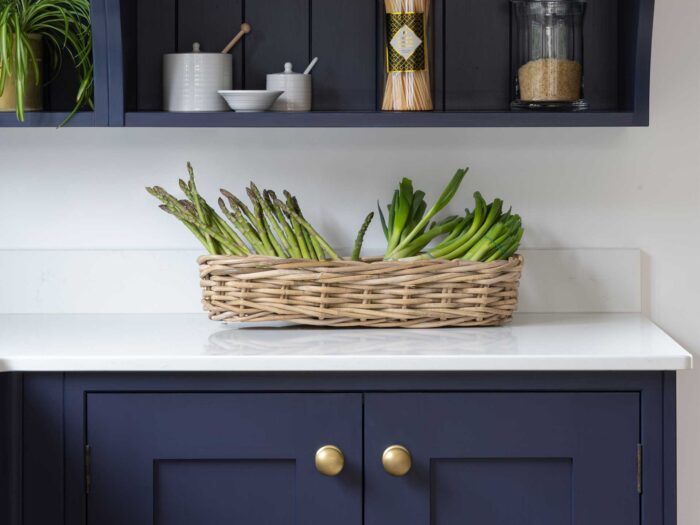
What is a splashback?
While an upstand is a strip of material above the countertop, a splashback typically covers the space between the the countertops and the underside of the units and is an easy-to-clean way of protecting the wall from everyday splashes and spills of cooking. Splashbacks are also used behind cooker hobs, and bathroom and kitchen sinks.
Pros:
- Splashbacks give the most protection for your walls
- There’s great scope for creating a wow-factor splashback in a variety of materials
- A splashback can be created in an alcove
- Dependent on material, a splashback can be very easy to clean
- Splashbacks can increase the hygiene in your kitchen as the whole area can be wiped clean
Cons:
- The cost of fitting a splashback can be relatively high
- Large areas of splashbacks can take a lot of cleaning
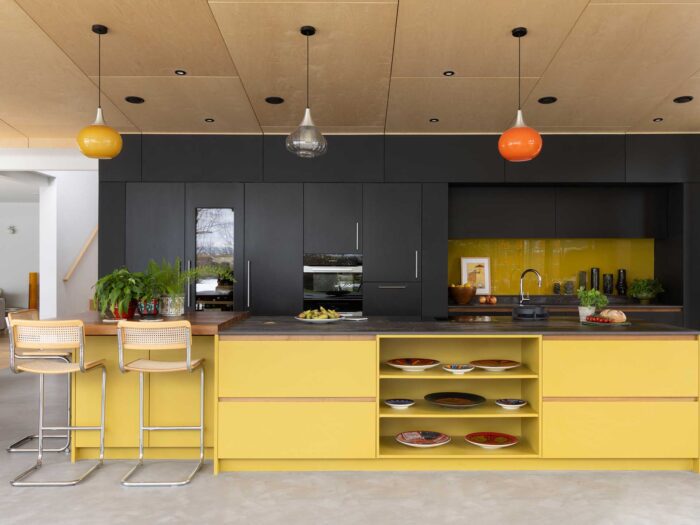
Alternative materials to consider for your upstand or splashback
Upstands and splashbacks have moved way beyond the realm of standard white tiles and grouting, and can be used as a design feature in your kitchen. Using an unusual material, like Naked Kitchen’s brass, is a great way to add texture and style.
Their original Ladbroke Kitchen (pictured below) mixes the brass splashback with solid walnut and a marble worktop. The units are painted in Naked colours Samphire Green and are the perfect accompaniment to the shiny brass.
Given that a brass splashback is one set piece, it can be cheaper than tiles and easier to install. They can be cut to size and are relatively easy to fit yourself. Brass metal can also be germicidal, meaning it can destroy harmful micro organisms in the kitchen.
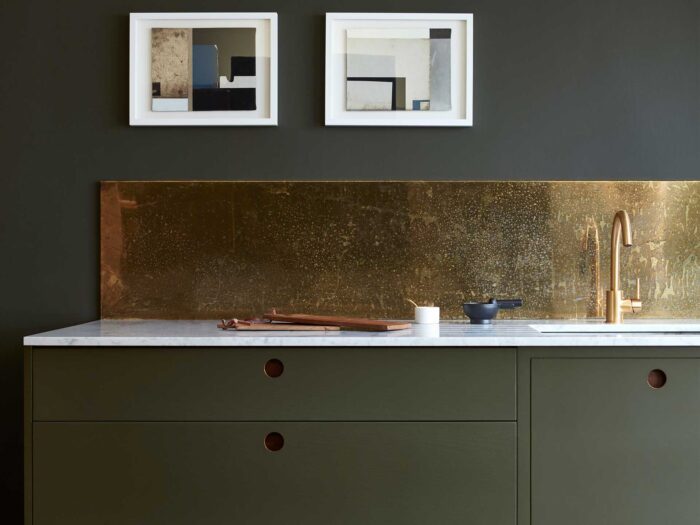
Consider chic marble splashbacks
Marble has long since been a coveted material in kitchens and bathrooms, given its durability, opulent feel and unique finish, all making it a great option for a backsplash. Marble has a high heat tolerance so works well in a kitchen.
The Mizu Marble Mosaic Scallop (pictured) from Artisan of Devizes has a honed finish, meaning its smooth and matte to touch and feels almost satin-like. Adding a marble scalloped backsplash in a mosaic style can bring a style statement to your room. Marble is fairly susceptible to staining, so you will need to make sure it’s cleaned and sealed regularly. Marble can be the more expensive option, but certainly adds a luxurious feel.
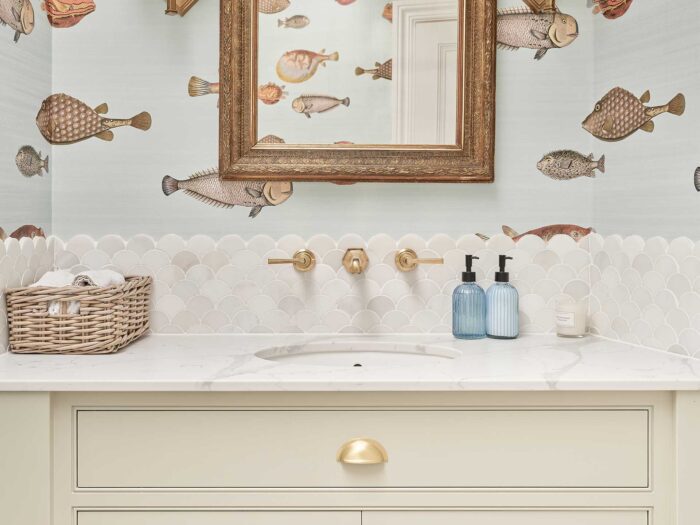
Wood-style splashback
Wood is an increasingly popular material in kitchens, as it can add texture into your designs. However, given its properties, it doesn’t always stand up in terms of steam and heat resistance. Ca’ Pietra are a family-led company that have some of the most design-led tiles in the business.
Their fantastic Kinfolk maple is wood-look but made from porcelain. Porcelain is non-porous and super-easy to clean. It’s also food-safe and hygienic. Porcelain splashbacks are also stain-resistant and highly scratch-proof.
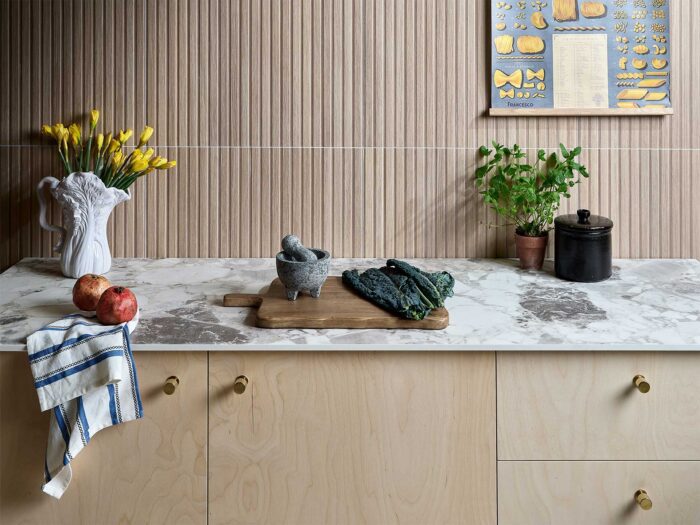
What are the most popular splashbacks?
Tiles remain extremely popular, whether you’re in a period property or a new home. The best thing about tiles is their sheer versatility in colour, shape, style and design. You can go understated and chic or bright and bold with a colourful chequerboard pattern.
A downside to consider with tiling is keeping your grouting clean. Given your splashback will be in a high traffic area, behind your cooker or shower, they’re likely to get dirty pretty quickly with cooking splashes in the kitchen and mildew in the bathroom. Grout is porous and will attract bacteria quickly, so keep your tiles cleaned regularly and dry the tiles in your shower after use.
If there’s a lot of staining, consider a deep clean of the tile grout with an electric scrubber or a steam cleaner. For a natural clean, stock up on vinegar, bicarbonate of soda and lemon juice. For something more intense, you can use tooth-whitening toothpaste or a bleach pen for grout. Although, try not to use bleach too often, as it could erode the tiling.
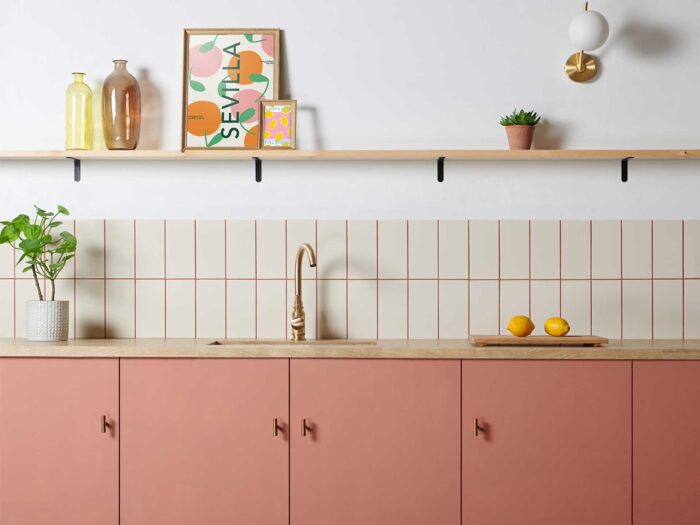
Should you match your splashback to your worktop?
Matching your splashback to your worktop is a way of creating a seamless aesthetic in your kitchen. It also makes for easier cleaning if everything is made from one material. Upstands are more commonly matched to your worktop.
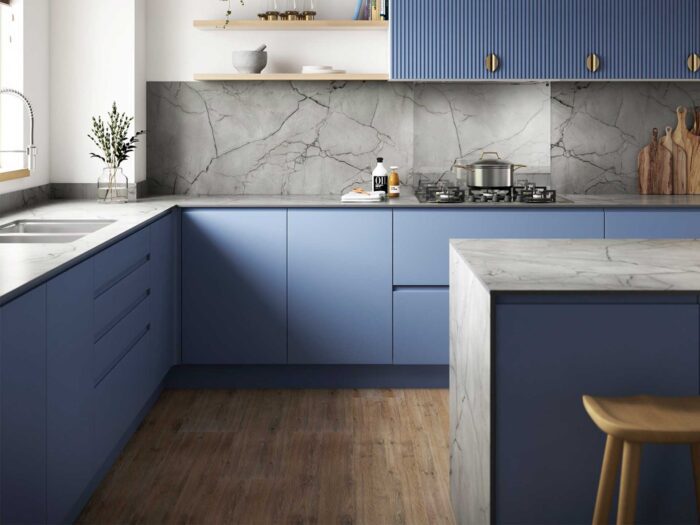
Can you get a bespoke splashback?
Yes. A bespoke splashback is a brilliant way of adding a wow factor and statement design to your kitchen or bathroom. Red Dog Design (pictured) are a great example of a company that turns works of art into splashbacks.
Made from toughened glass (which is five times stronger than regular glass but the same thickness), their splashbacks have plenty of benefits, including being waterproof, hygienic and easy to clean. The splashbacks are also heat resistant up to 220 degrees Celsius and can be cut to any shape. Each of the gorgeous splashbacks are made from Red Dog Designs’ Founder Sarah Coulsdon’s incredible contemporary paintings.
